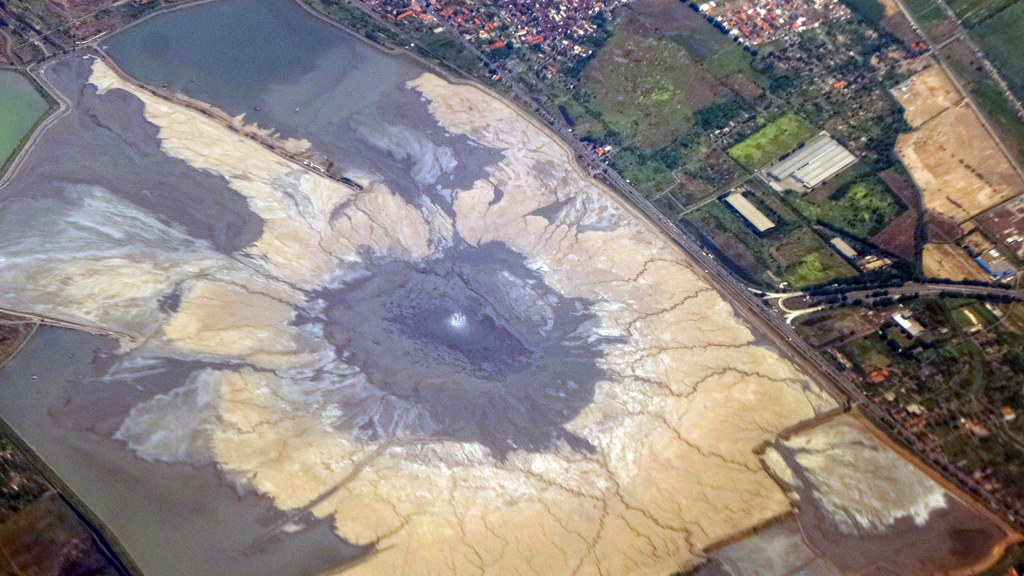It is the biggest mud volcano in the world; responsibility for it was credited to the blowout of a natural gas well drilled by PT Lapindo Brantas, although company officials contend it was caused by a very distant earthquake that occurs in a different province.
At its peak, Lusi (Lumpur Sidoardjo) spewed up to 180,000 cubic meters (240,000 cu yd) of mud per day. By mid-August 2011, mud was being discharged at a rate of 10,000 cubic meters (13,000 cu yd) per day, with 15 bubbles around its gushing point. This was a significant decline from the previous year when the mud was being discharged at a rate of 100,000 cubic meters (130,000 cu yd) per day with 320 bubbles around its gushing point.
It is expected that the flow will continue for the next 25 to 30 years. Although the Sidoarjo mudflow has been contained by levees since November 2008, resultant floodings regularly disrupt local highways and villages, and further breakouts of mud are still possible.
Mud volcano systems are fairly common on Earth, and particularly in the Indonesian province of East Java. Beneath the island of Java is a half-graben lying in the east–west direction, filled with over-pressured marine carbonates and marine muds. It forms an inverted extensional basin which has been geologically active since the Paleogene epoch. The basin started to become overpressured during the Oligo-Miocene period. Some of the overpressured mud escapes to the surface to form mud volcanoes, which have been observed at Sangiran Dome near Surakarta (Solo) in Central Java and near Purwodadi city, 200 km (120 mi) west of Lusi.
According to en.wikipedia.org














